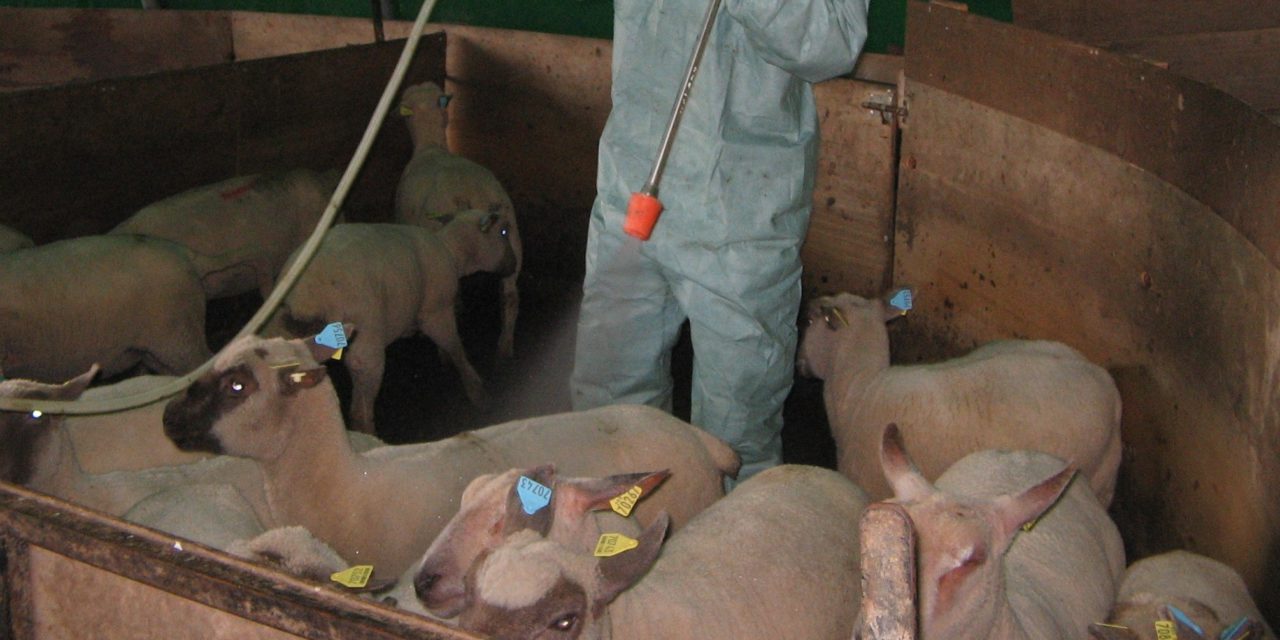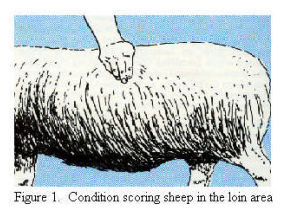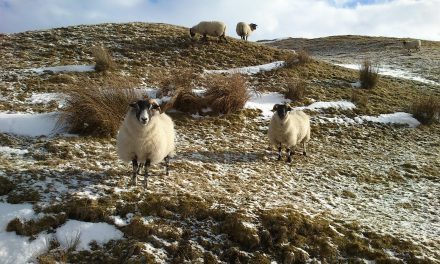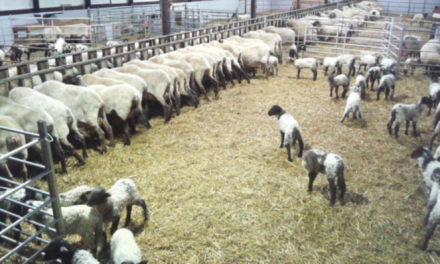This post is also available in:
![]()
![]()
![]()
Control and prevention of Bluetongue disease (BT)
Factsheet name: Control and prevention of Bluetongue disease (BT)
Need / Issue: Reduce the impact of viral infection
Introduction.
Bluetongue (BT), is a non-contagious viral infectious disease of ruminants, transmitted by bloodsucking insects of genus Culicoides. The causative agent is a segmented bicatenary RNA virus (BTV) of the Reoviridae family, genus Orbivirus. So far have been identified 27 serotypes of this virus and the ability of each strain to cause disease varies considerably. . Since 2000 numerous European countries have suffered for numerous incursions involving different serotypes (BTV1, 2, 4, 8, 9 and 16) of the bluetongue virus.
BT affected domestic and wild ruminants. The severity of the disease varies according to the different species, with more severe symptoms in sheep causing death, weight loss and interruption of wool growth.
The clinical signs characterized by fever, haemorrhages in the lips and buccal mucosa, sialorrhea, facial skin congestion, coronitis, edema of the submandibular region and cyanosis of the tongue, and dyspnoea. In male affected by BTV, transient infertility due to testicular degeneration has been reported. In sheep, severity of the disease is mostly based on the virulence properties of the strain of the BTV serotype, thus ranging from asymptomatic to critical ill with high mortality. In highly susceptible sheep, morbidity can reach up to 100%. Mortality averages between 2% and 30% but can reach 70%.
Herein, we summarise the main strategies which are applied in Italy and in Spain, in order to prevent and control this disease.
GLOBAL DISTRIBUTION OF BLUETONGUE
Bluetongue has a significant global distribution in regions where the insect vector (i.e., Culicoides species mosquitoes) is present, including Africa, Asia, Australia, Europe, North America and several islands in the tropics and subtropics. The virus is maintained in areas where the climate favors the survival of mosquitoes over winter.
In general, sheep in areas where the disease is endemic have a natural resistance to bluetongue. Outbreaks occur when susceptible sheep, particularly European breeds, are introduced into endemic areas, or when the virus is introduced into a particular region by airborne movement of infected Culicoides. The disease episode generally coincides with an increase in vector activity during periods of high temperature and rainfall, and a remission with the first frost or severe cold conditions.
The following map shows the distribution of BTV serotypes and Culicoides species involved in each region of the world.

BLUETONGUE SITUATION IN EUROPE
The areas where the disease had been recorded were located in the south of the continent, specifically in the Mediterranean basin, where serotypes 1, 2, 4, 9, 10 and 16 had been identified, until August 2006, when the first outbreak of BT by serotype 8 was declared in the Netherlands, which was the most northerly location where it was diagnosed. Subsequent outbreaks in other northern European countries have the following epidemiological factors in common: northern latitude, clinical signs in cattle and regional prevalence of the insect vector able to withstand European winters.
The following map shows the restriction zones by serotype or group of serotypes established in the EU as of November 16, 2021.

Topic: Health
Production: Dairy / Meat
Animal Category: All categories
SURVEILLANCE, CONTROL AND ERADICATION OF BLUETONGUE
Affected countries have national disease surveillance, control and eradication programs, which are usually on lines of action:
Direct control and prevention of BT
Control of the adult vector – The usage of repellent has been attempted in several experimental studies; however its field application has been not frequent. Mostly of the chemical substances that have studied are pyrethroids. Field experience demonstrated that application of these substances can contribute to the decrease of the abundance of vector population in the farm but does not certainly avoid the BTV infection.
The direct application of pyrethroids, such as deltamethrin, on the sheep skin against Culicoides, does not ensure their protection. It has been observed that several molecules of repellent cause a decrease in culicoids, on animals, but only for not more some days.
With regards to the environmental treatments, there are few data available, and they do not encourage their usage. Results of the studies suggest that disinfestation by pyrethroids cause decrease of the Culicoides population only for few days. In Italy and in Spain direct application of pyrethroids on sheep became mandatory only 2 weeks before they are officially moved from endemic areas to other with BTV free status.
Antilarval treatments –In order to arrange this treatment to reduce the abundance of vector insects in each place, it is essential to localize the reproduction sites of vector insects. Unfortunately, this activity is a relevant problem for culicoides and, for many species, reproduction sites remain unknown. However, it should be kept in mind that, for some species, including C. imicola, which reproduce in muddy habitats containing organic material, it is very supportive to eliminate puddles and dung from the surrounding farms and territories.
Flock management – Being the culicoides crepuscular and night insect, the housing of the animals inside a facility during the crepuscular and night hours could be an effective prophylaxis, although is not easy applicable in some field conditions.
It is recommended to install screens with a diameter of 5 mm or less on windows, doors and other possible openings in all farm buildings.
Indirect control
Vaccination – Antibody protection against BTV is serotype-specific, with little, if any, immune cross-protection to the others. Therefore, knowledge of the serotypes circulating in the area is essential.
There are two types of BTV vaccines, the live attenuated and the inactivated.
The live attenuated vaccine are made, since 1947, by using viruses that are still alive and able to replicate in the host but with significantly reduced virulence.
The live attenuated vaccine is easy to produce and relatively cheap, in addition is the only vaccine that is available in the market for all the viral serotypes.
This vaccine as containing the alive BTV, albeit with limited virulence, some recommendations must be followed when used, including avoid the use on pregnant animals and male. Indeed, these viral strains cross the placenta barrier causing foetal malformations; furthermore, they could causes transient male infertility. Vaccination with attenuated vaccine gives a more one year long immune protective response. Live attenuated vaccines have been used in Europe after the first occurrence of BT, but since 2006, are not used in the EU as the use of a live attenuated vaccine is linked to the possible transmission of this modified virus through vector insects.
The inactivated vaccine consists of the virus whose virulence has been eliminated by chemical or physical agents. They have available on the market since 2006.The main changes brought by inactivated vaccines were the possibility to use it all along the year and the solution to the problems of the movements restrictions on animals vaccinated with attenuated vaccine, due to the lack of viraemia. The min disadvantages were the increase of the price and the need of two doses to achieve the protective immunity.
Animal movement restriction – The movement of live animals, sperm and embryos delivering from areas under restriction to free areas, is strictly regulated by EU and national obligations.
Generally, it is forbidden to move sheep, and delivered their sperm, eggs and embryos from the BTV affected areas. The list of the affected and free areas are officially defined and the list frequently updated by the animal health authority on the basis of the epidemiological conditions.
However, movements are allowed in specific circumstances and under restricted health rules, which differ based on whether the animals are destinated alive to other farms or intended for slaughtering, on the age of the animal, and finally on the BTV serotype involved.
The general role is that animals should not be move to farm affected by active infection or to farm located in areas with active infection.
In the case animal are transported to abattoirs, movement have to be performed during the day after skin treatment with insect repellents, in addition, slaughtering has to be performed within 24 hours.
In general, movement of living animals has major restrictions, including housing for 60 days prior to departure in a quarantine station, or for 28 days in a geographical area (province or municipality) in which the serological and entomological surveillance programs confirmed that, in a certain period of the year, there is no vector circulation of the virus. The determination is based both on the data of the current year and on historical data.
Surveillance
The surveillance should be carried out in accordance with the pathological and epidemiological knowledge of the disease, the biology of the vector as well as taking into account the environmental factors (geographic and climatic) of a given territory.
The main measures include the serological follow-up of sentinel animals and the use of entomological traps to control the presence of the virus in the vector insect. Clinical surveillance has been also applied in the areas around an outbreak of BT
In Italy and Spain, National Bluetongue Surveillance Plans have been prepared, which are revised annually according to the results obtained, with the task of early detecting the presence of viral circulation in free territories, for preventing its spread and for applying the most suitable control measures.
In infected territories, the main purpose of serological and entomological surveillance is the identification of the circulation of new serotypes and the control of the spread of serotypes already present in the area.
Entomological surveillance aims to determine the presence / absence of the vector, the vector species present, their geographical distribution and seasonal dynamics.







